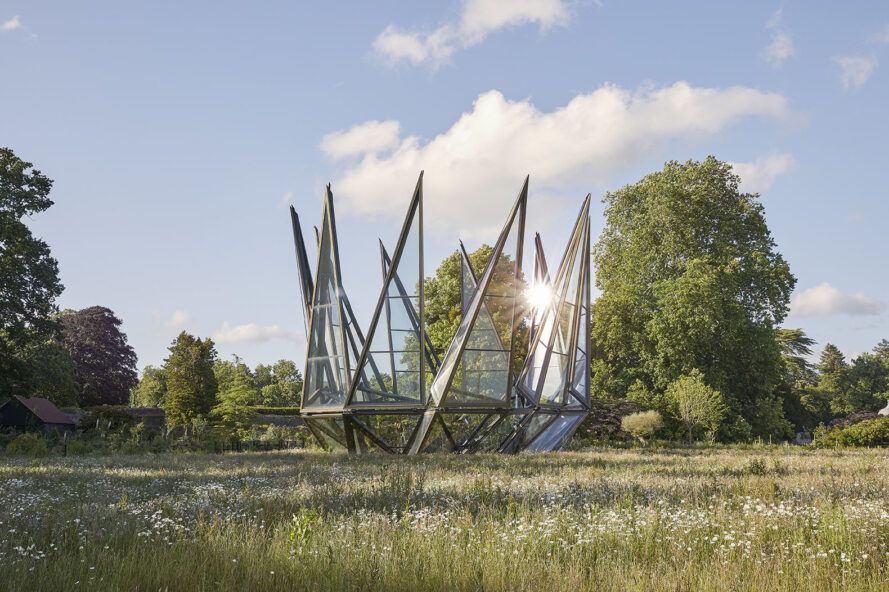
Amazing greenhouse set near garden influenced by Silk Road
Heatherwick Studio recently unveiled a new project, a kinetic greenhouse at the edge of the National Trust’s Woolbeding Gardens. It is also part of a historic estate in West Sussex This beautiful unfolding structure is at the center of a new garden that shows how the Silk Road influences English gardens even in modern times.
Continue reading below
Our Featured Videos

Heatherwick Studio designed the Glasshouse in a joint effort with The Woolbeding Charity and the National Trust. Inspiration came from Victorian ornamental terrariums, but the greenhouse is far from ornamental. The latest engineering techniques are used to create a protective functional structure that is also beautiful. The design features ten steel “sepals” made of glass and aluminum. These sepals open over four minutes to reveal a 1,517 square foot space shaped like a crown.
Related: Greenhouse produces food and energy for a circular economy

The Glasshouse opens on warm days using a hydraulic system to give the inside plants sun and ventilation. Then in colder weather, the structure stays closed to protect subtropical plants.

“This is a place and a project that literally unfolds. You step through this bewitchingly beautiful garden and discover an object that starts like a jewel and ends like a crown, as the Glasshouse slowly unfurls,” says Thomas Heatherwick. “I think it also speaks of our need to keep creating amazing pasts. Weaving contemporary inventions into the fabric of historic settings and having the confidence to let each one speak to the other.”

Further, the Silk Route Garden around the greenhouse walks visitors through a journey influenced by the ancient Silk Road. The trading routes between Asia and Europe brought silk and spices as well as many plant species to Britain for the first time. These plants included modern Western favorites such as rosemary, lavender and fennel.

The garden also contains a winding path that guides visitors through the twelve regions of the Silk Road. The path offers over 300 plant species for visitors to see, too. Plant species span from Mediterranean evergreens to Gallica roses that came to Europe thanks to traders from Persia.

“This Heatherwick Glasshouse represents the cutting edge of technical design and engineering but it’s also a restoration of something that is part of Woolbeding’s history,” Mark Woodruff of The Woolbeding Charity says.

“It stands as a crowning achievement in contemporary design, to house the flora of sub-tropical south-west China at the end of a path retracing the steps along the Silk Route, from temperate Europe and across mountains, arid lands and high pastures that brought the plants from their native habitat in Asia to come to define much of the richness and glory of gardening in England,” Mark Woodruff adds.

Inside, the Glasshouse shelters a rare specimen of an that then supplies shade for delicate ferns, umbrella trees, magnolias and bananas.
“The gardens and parklands of the National Trust are as much about the future as they are about the past,” Andy Jasper, Head of Gardens and Parks for the National Trust says. In doing so, he reminds us of the horticultural legacy of Europe and England as well as of our commitment to tomorrow.
